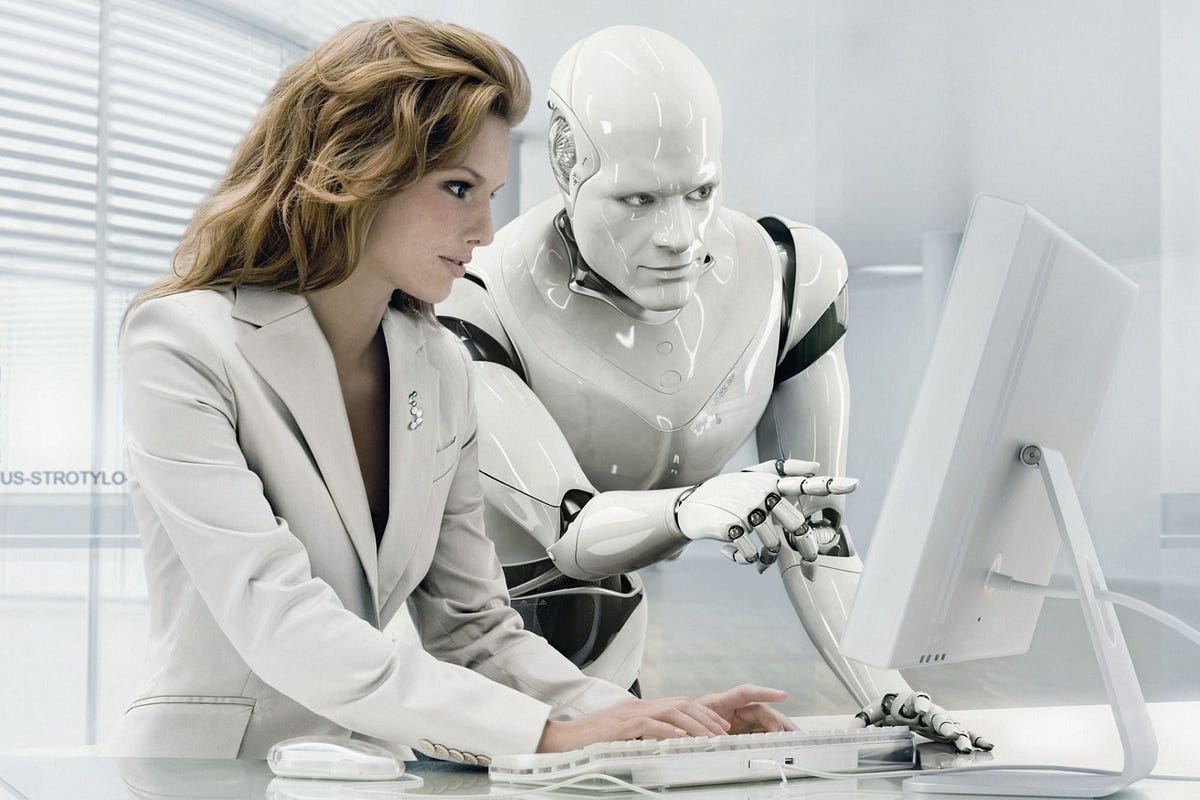AI & Robots vs. Humans: A Complex Tapestry of Competence, Imagination, and Integration. | Posted by Crypto Beast | Coins | January 2024
The rise of artificial intelligence and robotics has sparked polarized debates about the future relationship between these technological marvels and humanity. Will robots replace humans and make us obsolete in the great tapestry of existence? Or will it be humans who will rise to new levels of productivity and innovation by embracing and integrating AI and robots into our lives? In this comprehensive exploration, we examine the arguments put forward by both sides, analyzing the aspects of capabilities, imagination, and integration that define the evolving relationship between AI, robots, and humans.
Section 1: Rise of the Machines – The Claim for Robot Dominance
1.1 Performance and Precision: Proponents of robot dominance claim that machines possess unparalleled power and precision. Robots are unaffected by human physical limitations, allowing them to perform tasks with unmatched speed and accuracy. In environments where precision is most important, such as manufacturing and surgery, robots are proving their superiority.
1.2 Human inability: Advocates of robot superiority often point to human fallibility and inefficiency. While humans are prone to fatigue, distraction, and error, robots can operate non-stop without deviating from their programmed protocols. In scenarios where perfection is important, robots are considered a more reliable option.
1.3 Future Forecasts: Some enthusiasts predict a future where robots surpass humans in every imaginable aspect, from intellectual effort to emotional intelligence. This argument revolves around the idea that the constant advancement of technology will inevitably lead to the creation of sentient, self-aware machines that can outperform humans.
Section 2: The Nature of Humanity – The Argument for Robot Dominance
2.1 Feelings and Emotions: Detractors of robot dominance theory argue that the essence of humanity lies in our capacity for emotions and feelings. Robots can simulate emotions, but they lack the depth and authenticity of the human experience. Love, empathy, and compassion are human qualities that machines cannot replicate.
2.2 The power of imagination: Human imagination, seen as the driving force of creativity and innovation, is a powerful argument against robot dominance. AI can analyze data and identify patterns, but it is argued that true innovation comes from the human ability to dream, envision the future, and create the previously unimaginable.
2.3 Ethical considerations: An important aspect of the human experience is the moral compass and ethical decision-making. Critics of robot domination emphasize that machines lack ethical judgment, empathy, and a sense of right and wrong. Handing over control to machines can lead to unexpected ethical dilemmas and unintended consequences.
Section 3: Benefits of Integration — Humans Embracing AI and Robots
3.1 Neuralink and human-machine integration: Integrating AI into the human experience is gaining traction through innovations such as Neuralink, led by Elon Musk. Neuralink seeks to seamlessly integrate the human brain with AI, potentially opening up new dimensions of cognitive ability. This argument suggests that humans who embrace such technologies will not be replaced but will actually evolve beyond their current limitations.
3.2 Increased productivity: Data shows that humans embracing AI and robots across a variety of industries will see significant productivity gains. In manufacturing, healthcare, and finance, technology integration is enabling humans to empower themselves, streamline processes, and achieve unprecedented levels of efficiency.
3.3 Adaptive Benefits: Arguments supporting human dominance revolve around our ability to adapt. Robots may excel at certain tasks, but humans have the ability to adapt to diverse and dynamic environments. The argument is that humans who accept and adapt to technological advancements will not only survive but thrive in a world where AI and robots play an essential role.
conclusion:
The debate surrounding robots’ potential dominance over humans is complex and multifaceted. Proponents argue for the accuracy and efficiency of machines, while detractors emphasize the irreplaceable qualities of human emotion, imagination, and ethical decision-making. Integrating AI and robots into the human experience introduces a new dimension to the discourse, with advancements like Neuralink and increased productivity challenging notions of replacement.
The harmonious coexistence of humans and technology seems to be the key to the magnificent tapestry of the future. As we navigate the evolving landscape of AI and robotics, the choices we make regarding integration, ethical considerations, and preservation of uniquely human qualities will shape the trajectory of this complex relationship. Whether dominated by robots, humans, or symbiotic relationships, the journey into the future is an exciting exploration of the possibilities and challenges that will define our collective destiny.

